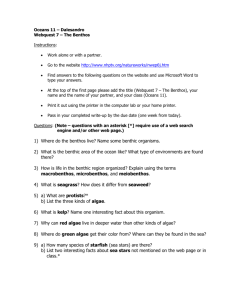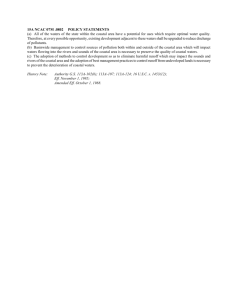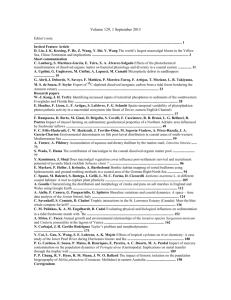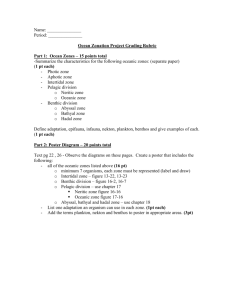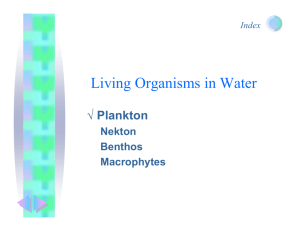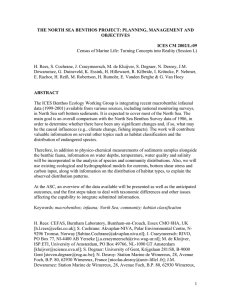Annex 4
advertisement
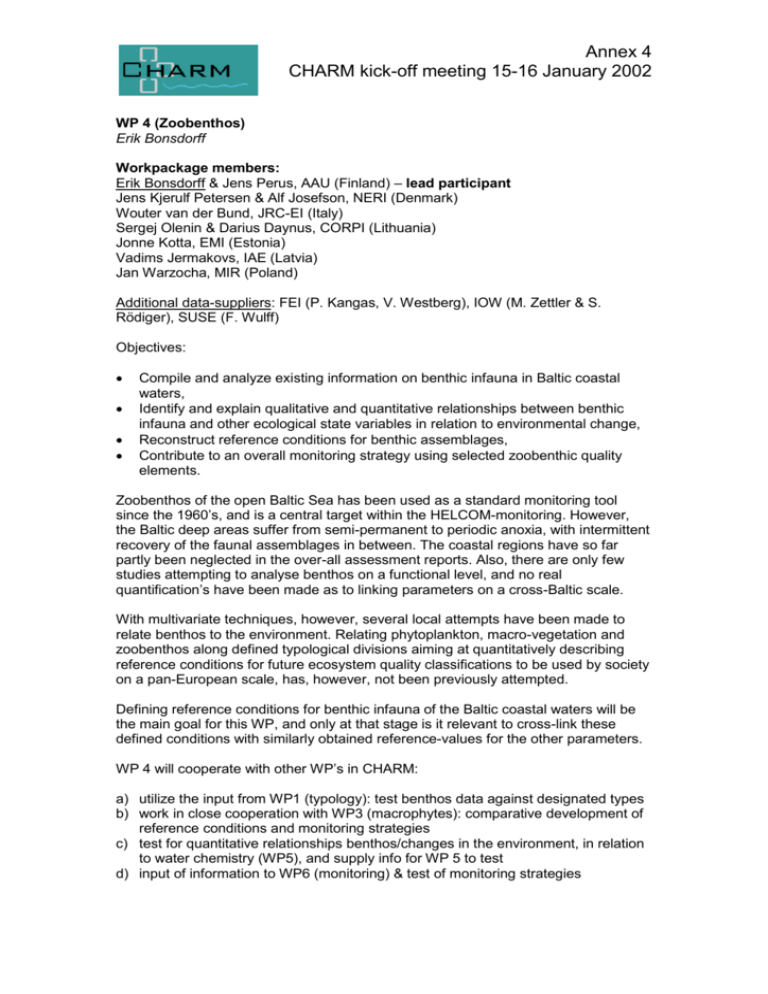
Annex 4 CHARM kick-off meeting 15-16 January 2002 WP 4 (Zoobenthos) Erik Bonsdorff Workpackage members: Erik Bonsdorff & Jens Perus, AAU (Finland) – lead participant Jens Kjerulf Petersen & Alf Josefson, NERI (Denmark) Wouter van der Bund, JRC-EI (Italy) Sergej Olenin & Darius Daynus, CORPI (Lithuania) Jonne Kotta, EMI (Estonia) Vadims Jermakovs, IAE (Latvia) Jan Warzocha, MIR (Poland) Additional data-suppliers: FEI (P. Kangas, V. Westberg), IOW (M. Zettler & S. Rödiger), SUSE (F. Wulff) Objectives: Compile and analyze existing information on benthic infauna in Baltic coastal waters, Identify and explain qualitative and quantitative relationships between benthic infauna and other ecological state variables in relation to environmental change, Reconstruct reference conditions for benthic assemblages, Contribute to an overall monitoring strategy using selected zoobenthic quality elements. Zoobenthos of the open Baltic Sea has been used as a standard monitoring tool since the 1960’s, and is a central target within the HELCOM-monitoring. However, the Baltic deep areas suffer from semi-permanent to periodic anoxia, with intermittent recovery of the faunal assemblages in between. The coastal regions have so far partly been neglected in the over-all assessment reports. Also, there are only few studies attempting to analyse benthos on a functional level, and no real quantification’s have been made as to linking parameters on a cross-Baltic scale. With multivariate techniques, however, several local attempts have been made to relate benthos to the environment. Relating phytoplankton, macro-vegetation and zoobenthos along defined typological divisions aiming at quantitatively describing reference conditions for future ecosystem quality classifications to be used by society on a pan-European scale, has, however, not been previously attempted. Defining reference conditions for benthic infauna of the Baltic coastal waters will be the main goal for this WP, and only at that stage is it relevant to cross-link these defined conditions with similarly obtained reference-values for the other parameters. WP 4 will cooperate with other WP’s in CHARM: a) utilize the input from WP1 (typology): test benthos data against designated types b) work in close cooperation with WP3 (macrophytes): comparative development of reference conditions and monitoring strategies c) test for quantitative relationships benthos/changes in the environment, in relation to water chemistry (WP5), and supply info for WP 5 to test d) input of information to WP6 (monitoring) & test of monitoring strategies Annex 4 CHARM kick-off meeting 15-16 January 2002 e) active participation in WP7 (dissemination) also in linking CHARM to other activities (e.g. MARE, the needs of HELCOM, and several regional or national efforts to classify and define the state of the coastal marine environment). Four specific tasks, linked to specific milestones & deliverables are identified: (1) compilation of existing data and literature for benthic community data along the entire Baltic Sea coastal area, (2) conceptual and quantitative relationships between benthos and other (abiotic & biotic) parameters and components will be established, (3) linking benthos to phytoplankton and macrophytes in order to develop monitoring strategies for coastal waters, and to define “pristine” reference conditions based on the biota, and (4) linking the biota to the typology of coastal waters. WP 4 group discussion – immediate actions planned: The WP-members met during the ws in Copenhagen (Jan. 16, 2002) and discussed the following: a) the aims, time-table and deliverables for the WP were discussed; it was agreed not to have a WP-meeting until the first deliverable (metadata-list; spring 2002) has been delivered, b) a unifying and testable hypothesis is to be defined within the first step of the work, in order to facilitate the analysis for the specified deliverables, c) a joint-spreadsheet (MS Excel) will be developed within one month to unify the parameters to be included in the metadatabase to be collected (Deliverable #1), d) the level of precision (gear, sampling scheme, taxonomic resolution etc = internal quality control), geographic range (i.e. the definition of “coastal waters” as broader than the EC-norm 1 nm from the coastline), and temporal coverage of the data were discussed: It will be up to the WP-members to select the information to be used (no large-scale intercalibration will be performed), and the spatial range of stations to be included must be wide enough to cover the basic typology to be proposed by WP1 (national and regional attempts will run parallel to the overall analysis), and no specific (upper or lower) depth limits are set. “Historic” data will be included when the attempt to set reference conditions is done; until then, primarily reasonably “modern” data is to be included (to facilitate cross-area analysis), e) interaction with WP1 (typology) is central from start, but close interaction with WP2 (phytoplankton) and WP3 (macrophytobenthos) is needed. The metadatabases collected within WP3 and WP4 should be interlinked as far as possible for abiotic parameters to facilitate later cross-comparison, f) the need for accurate maps of the data (GIS-format) was mentioned; in order to analyse and illustrate against typology this is of central importance, g) the general list of deliverables for WP4 was discussed:#3 = metadatabase (under work); #7 = draft scientific paper on benthic monitoring data; # 22 = relating zoobenthos to typology; #33 = numerical relationships benthos/environmental parameters (quantitative analysis preparing for defining reference conditions and to facilitate monitoring-strategies), h) a first joint WP4-workshop is planned for the autumn 2002.
